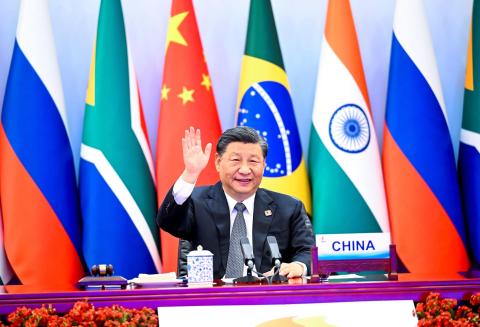International Development Minister Concetta Fierravanti-Wells' remarks about China's aid to the Pacific are part of a long tradition of concern in Australia. Yet while some Chinese aid projects are less than perfect, as my colleague Jonathan Pryke notes, Fierravanti-Wells' sweeping comments reflect a lack of understanding about China's foreign aid.
The first point to recognise is that Chinese aid is not a coherent and strategic tool of the Chinese state. In fact, while an inter-agency aid coordination mechanism exists, it largely has a symbolic role.
Chinese aid policy is drafted by the agency responsible for its management, and many agencies are involved – for example, the Ministry of Commerce, the Ministry of Health, the Ministry of Education, and provincial-level governments, among others. The State Council approves policies, but this process is not coordinated. In aid partner countries, there is usually only one or two government staff to oversee the aid program. Different agencies often have competing agendas.
Many Chinese government officials working in foreign aid are genuinely committed to improving well-being. In recent years, China has adopted some elements of the Development Assistance Committee for the Organisation for Economic Cooperation and Development (OECD), such as creating five-year country development plans in close consultation with partner countries. Officials are proud of China's commitment to 'demand-driven aid', where the proposals for development projects must come from the partner country.
Many of the aid implementing agencies, including large state-owned enterprises, have established project experience in China. They have often transferred this same modus operandi to the aid partner country, with very mixed success.
One example is the Ramu Nickel Mine in Papua New Guinea (considered an investment with development benefits, with an aid component). This mine has a long history of disruptions because of community dissatisfaction. During fieldwork research at the mine site, I spent time talking to a young Chinese woman appointed by the mining company as the community liaison officer. She had no previous experience in the Pacific, and although her English wasn't bad, she couldn't speak any local languages. She was genuine in her efforts to get to know and understand the different landowner groups and their concerns, but she recognised she was in for a tough time.
The mining company's Chinese management found it hard to understand how the approaches used so successfully in China – in particular, agreeing terms with the government with the assumption that the arrangement would be largely respected by the local people – didn't work in PNG. The company management acknowledged they were on a steep learning curve and were keen to improve, with their business success at stake, too.
A second point is differences in the way that development is understood by its practitioners in mainland China. Amartya Sen's notion of 'development as freedom' directly or indirectly underpins traditional OECD donor views of reducing poverty. China's approach has nothing in common with Sen's idea that 'removal of unfreedoms' is both the means and the end of development. According to traditional donors' development approaches, transparent institutions and 'good' governance are critical to sustainable development.
The Chinese view, however, sees development as a triangular hierarchy of needs, in which the broad base of fundamental physical and material needs has to be met before anything else can be considered. In this vision, economic growth and investment in infrastructure are seen as the key factors for achieving developed status.
According to this Chinese approach, a key aspect of development is not looking like a poor, underdeveloped, backwards country, either to the people themselves or to outsiders. For many Chinese, the Birds Nest Stadium, the Water Cube, and other hyper-modern buildings constructed for the 2008 Beijing Olympics were symbolic of how China had progressed to become a developed and modern country. Skyscrapers and wide roads are seen as a source of national pride. According to this approach, projects that to Western eyes look like 'white elephants', such as sports stadiums, are very much in line with what being developed entails.
China's development record in the Pacific is mixed. But this should not be confused with China being nefarious.

